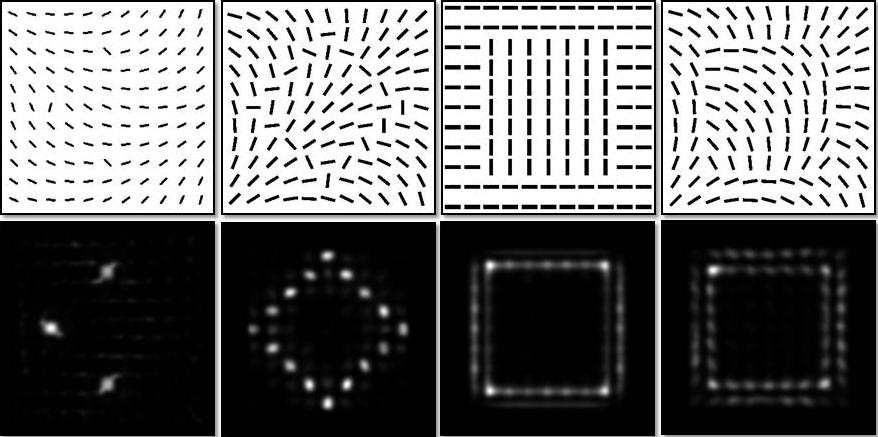
| Home | People | Research | Publications | Demos |
| News | Jobs |
Prospective Students |
About | Internal |

|
Bottom-up Saliency and Its Biological Plausibility
|
|

|
|
|
Visual saliency is believed to play an important role in the deployment of attention and perceptual organization. The mechanisms of saliency, their neurophysiological basis and psychophysics, have been extensively studied during the last decades. More recently, there has been an increasing effort to introduce computational models for saliency. Since the bottom-up visual pathway of biological vision is much better understood than its top-down counterpart, most of these saliency models consider bottom-up saliency, and aim to replicate the known properties of the psychophysics or physiology of the latter. While some models have been shown to reproduce various properties of biological vision, they lack a formal justification for the underlying image processing steps in terms of a unifying computational principle for saliency. In this work, we study both the effectiveness, and biological plausibility of discriminant saliency as a solution for bottom-up saliency. In particular, we combine the discriminant saliency hypothesis with the classical assumption that bottom-up saliency is a center-surround process, to derive a (decision-theoretically) optimal saliency detector for stimuli compliant with natural image statistics. For this, the saliency of each image location is equated to the discriminant power of a set of Gabor-like features with respect to the classification problem that opposes stimuli at center and surround. Various significant results are shown. First, the optimal discriminant saliency detector is shown to have a 1-to-1 mapping to the standard neural architecture of the primary visual cortex (V1): a combination of divisively normalized simple cells and complex cells. Second, application of the detector to the displays classically used to measure saliency and visual search, shows that 1) the detector explains the well known qualitative characterizations of human performance (pop-out for single feature search, disregard of feature conjunctions, and asymmetries between the existence and absence of a basic feature), and 2) makes very accurate quantitative predictions for properties such as the nonlinearity of saliency perception, the influence of background heterogeneity on saliency percepts, and the compliance of saliency asymmetries with Weber's law. Finally, the bottom-up discriminant saliency detector is shown to make accurate predictions of human eye fixations, for natural scenes and free-viewing conditions. The consistency between discriminant and biological saliency not only demonstrates the biological plausibility of the former, but also offers explanations for the latter. For example, it provides a holistic functional justification for the standard architecture of V1 as an optimal detector of salient locations in the visual field, when optimality is defined in a decision-theoretic sense and sensible simplifications are allowed for the sake of computational parsimony. As a side effect of the mapping between discriminant and biological saliency, it is also shown that the basic neural structures of V1 are capable of computing the three fundamental operations of statistical inference: assessment of probabilities, implementation of optimal decision rules, and feature selection. |
|
| Selected Publications: |
|
| Demos/ Results: |
|
| Contact: | Dashan Gao, Nuno Vasconcelos |
![]()
©
SVCL